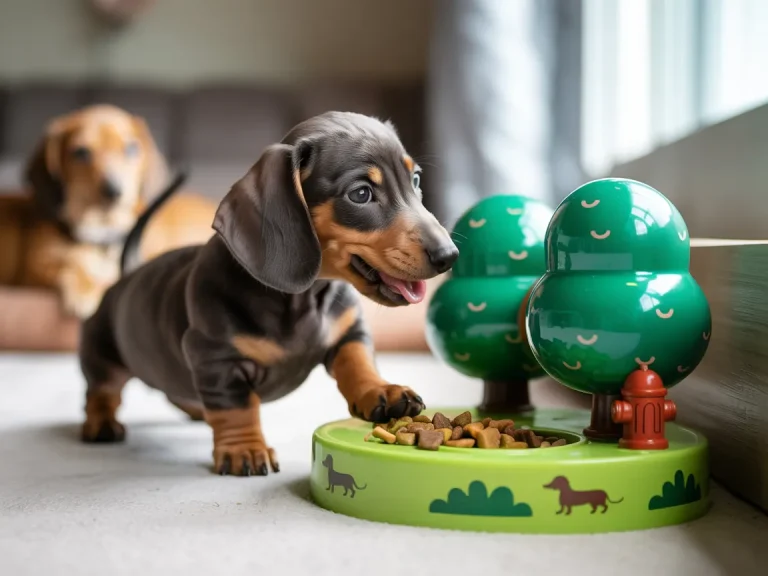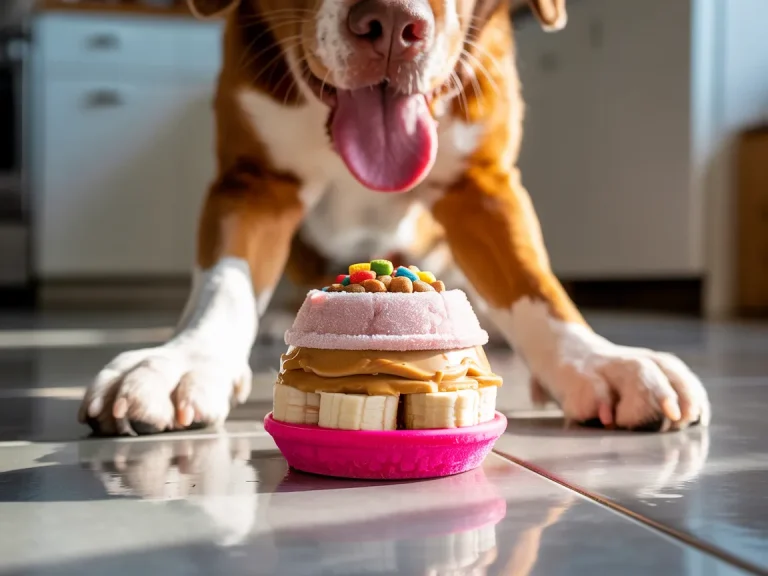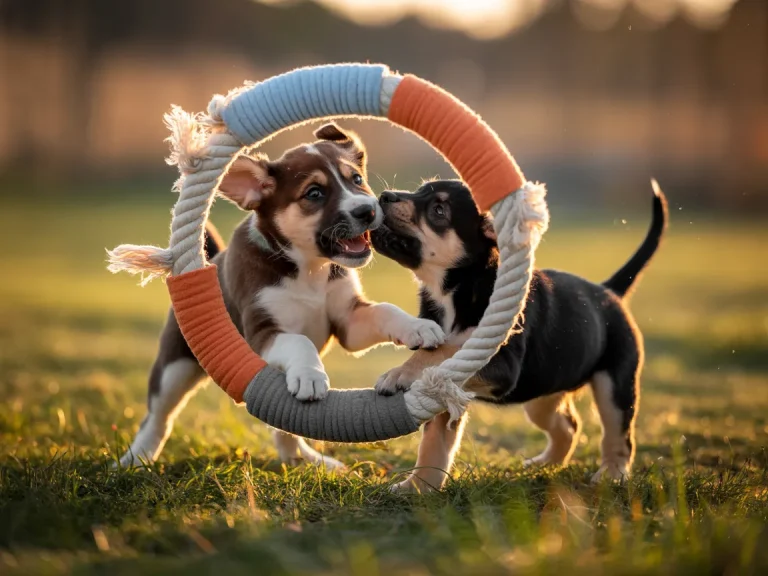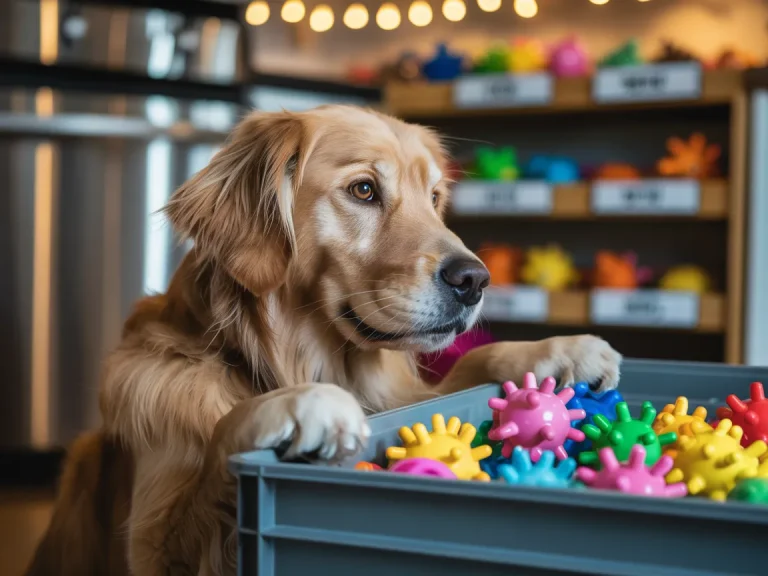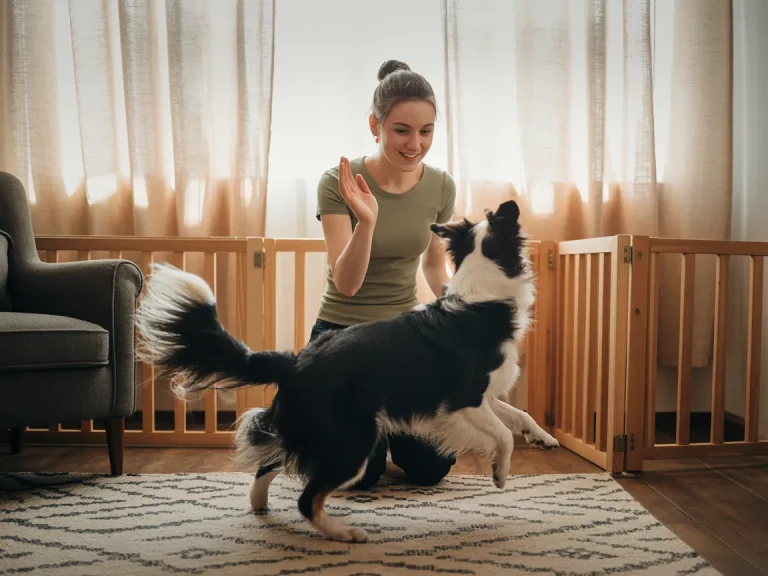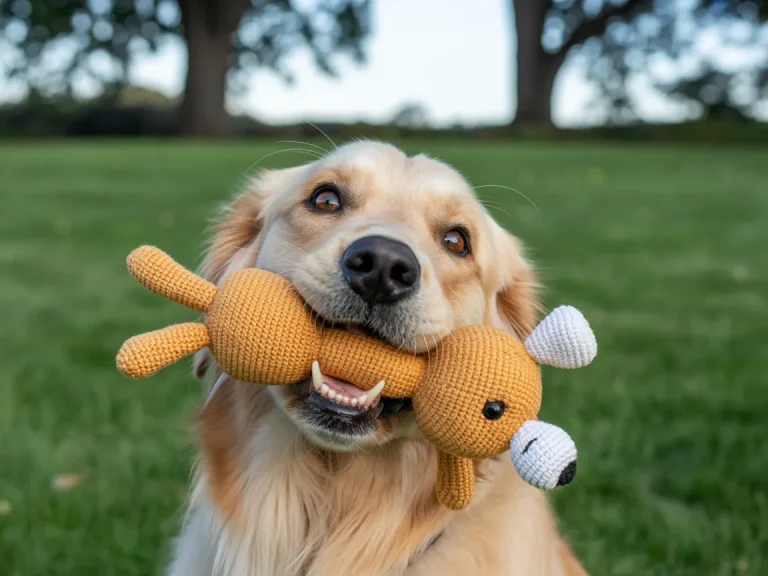Dogs are intelligent, curious, and often under-challenged. Providing toys that stimulate their brains can reduce boredom, destructive behavior, and improve overall happiness. Below are seven innovative toy hacks that use everyday materials and a bit of creativity to ignite your dog’s brainpower—whether you’re indoors, in the yard, or setting up a smart dog toy box or dog toy basket filled with rotating surprises.
Here’s the upgraded, trainer-tested version of those ideas.
1. Puzzle Plank with Sliding Cups
Think of this as a mini sushi conveyor for your dog—except the rolls are treats and your pup is the chef deciding which lid to slide. Repurpose a shallow wooden board, add a few sliding cups or lids, and tuck a reward under one or two. Start simple. One cover, one win. Then add more covers and a couple of empties so your dog learns to problem-solve instead of guessing.
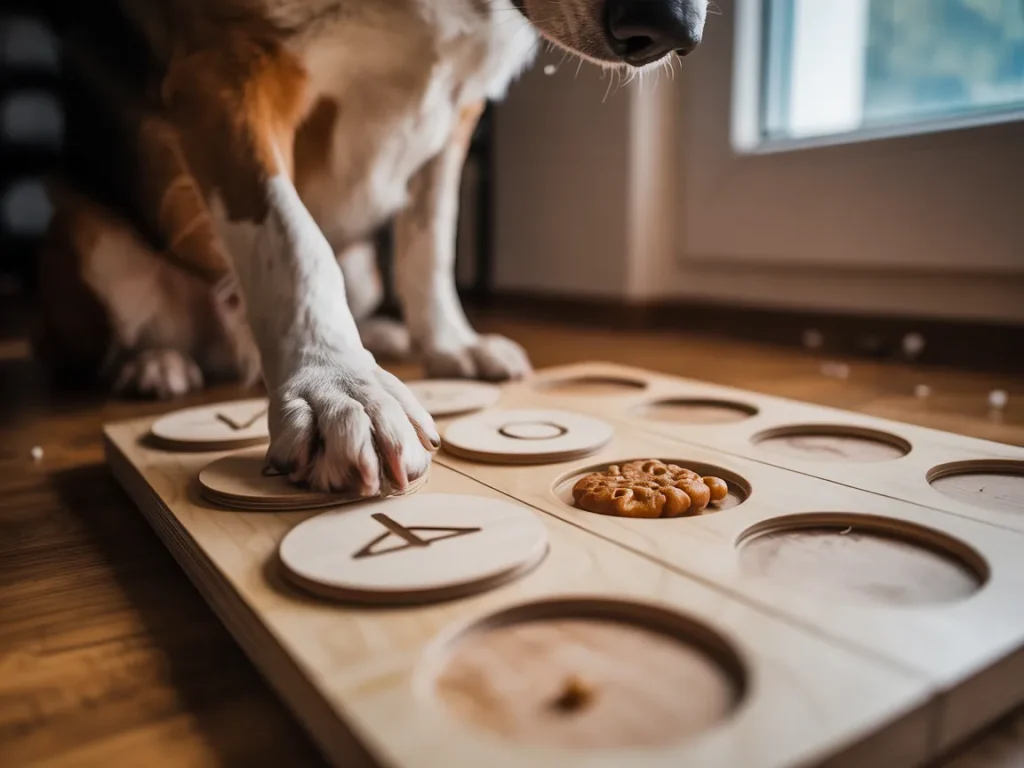
Once they get the hang of it, level up. Mark each lid with a symbol—star, circle, tiny paw. Cue your dog to “find the star,” and watch that lightbulb turn on. You’re building not just nose work and paw control, but memory and pattern recognition.
Make it a “learning station.” Park the plank next to your training mat. Do one cue (sit, down, spin), then send them to slide a lid. Switch the prize sometimes: a kibble one round, a quick tug game the next, over-the-top praise after that. When the reward changes, the real prize becomes the game itself—and that’s when you’ve got a dog who loves to learn.
Safety + Setup Tips
Use smooth wood and snug tracks so cups glide without pinching toes. If your dog’s a paw-slammer, add felt pads under the sliders to soften the motion and noise. Supervise the first few sessions to make sure “puzzle” doesn’t turn into “chew toy.”
2. DIY Tug-and-Treat Bottle
If your dog thinks tug is life, this one’s their theme park. Slide a clean, label-free plastic bottle into a braided sleeve made from old T-shirts or fleece. Snip a couple tiny slits in the bottle so kibble shakes out when your pup tugs or bats it around. Knot the ends of the braid nice and tight—no loose spaghetti here.
Why it works: you’re stacking two currencies—tug and treats—so persistence pays. Dogs love that feeling of “I do a thing, the world responds.” It’s like a slot machine, but the jackpot is chicken.
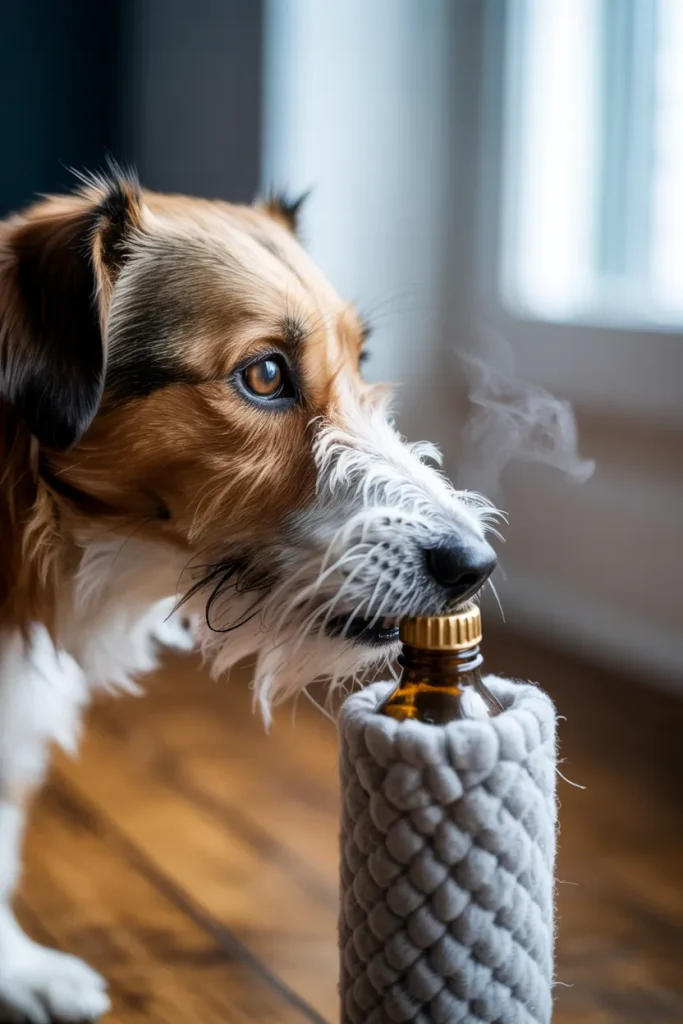
Got a power chewer? Double up the braid for a thicker sleeve or nest the bottle inside a tougher outer shell (think a durable toy casing) so the puzzle survives more than one victory lap. Always supervise the first playtest and retire the bottle if it gets cracked—this is brain work, not a recycling yard.
Remix Ideas: Add a soft “tail” or a floppy ear to the sleeve for extra chase appeal. For scent-driven dogs, dust a few pieces of kibble with crushed freeze-dried liver and let the toy sit in a bag overnight. Smells like a five-star restaurant—at least to them.
3. The Rotating Toy Basket Challenge
Here’s the truth: most dogs don’t need more toys; they need mystery. Instead of a forever-open buffet, rotate a tight lineup of three to five options every few days. Keep the rest stashed in a bigger box. When the new set appears, it feels like Christmas morning—again.
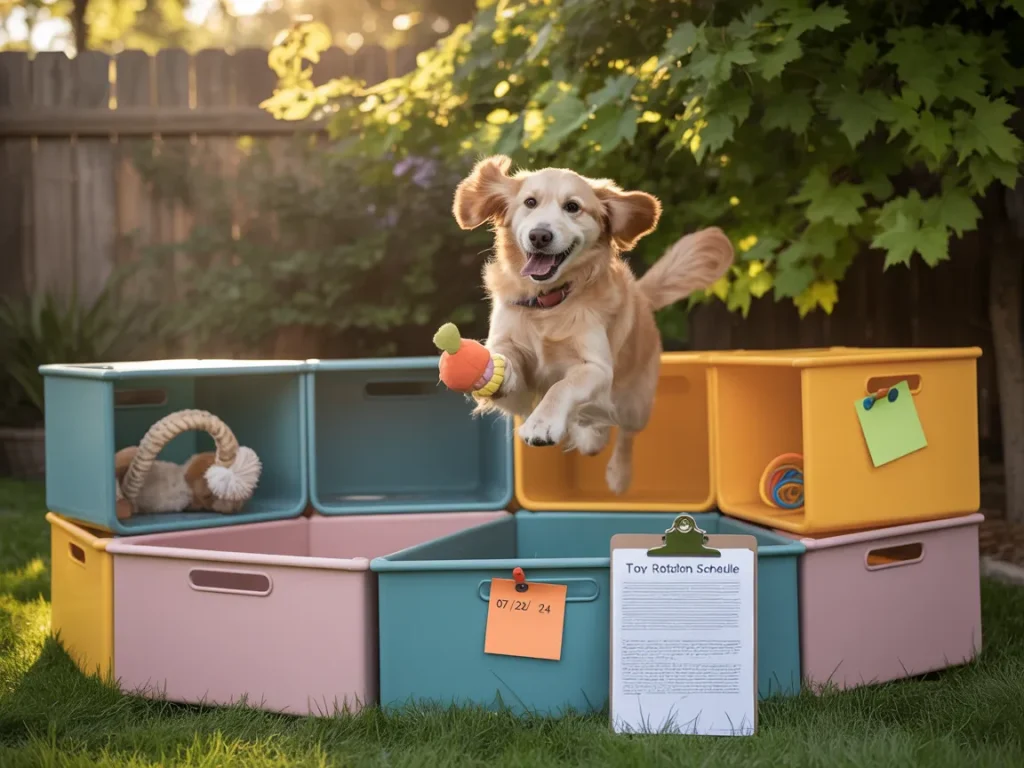
Mix the flavors: a plush with a hidden squeak for “catch and cuddle,” a twist-or-pop gadget for brain work, a tough outdoor fetch piece for sunny minutes, and one heart-made DIY rope or sock-knot for that cozy, homemade charm. Notice what your dog reaches for first and build future rotations around their mood—some days they’re philosophers, other days they’re linebackers.
Pro Tips to Keep It Fresh
Color-code small bins—“Sniff,” “Chew,” “Think,” “Chase”—so you can grab a balanced set without overthinking it. Jot a tiny note on your phone when something hasn’t been out in a while, then bring it back like a limited-edition drop. Every few weeks, add one new texture or shape. Novelty is rocket fuel for curiosity, and curious dogs are easier to train, easier to tire out, and a lot less likely to re-decorate your shoes.
4. Hidden Snuffle Mat from Old Fabric
A snuffle mat is basically a nose-powered treasure field—think tall grass with gossip. Grab a rubber sink mat (the kind with holes) and thread strips of fleece or old T-shirts through until it looks like a shag rug. Tuck a few treats deep inside and let your dog work the scent trail like a tiny detective with a very wiggly tail.
Start easy: sprinkle treats on top so they “win” fast. Then bury them deeper. You’ll see the sniffing slow down, the tail settle into that steady metronome, and the brain switch on. That’s focus you can’t fake.
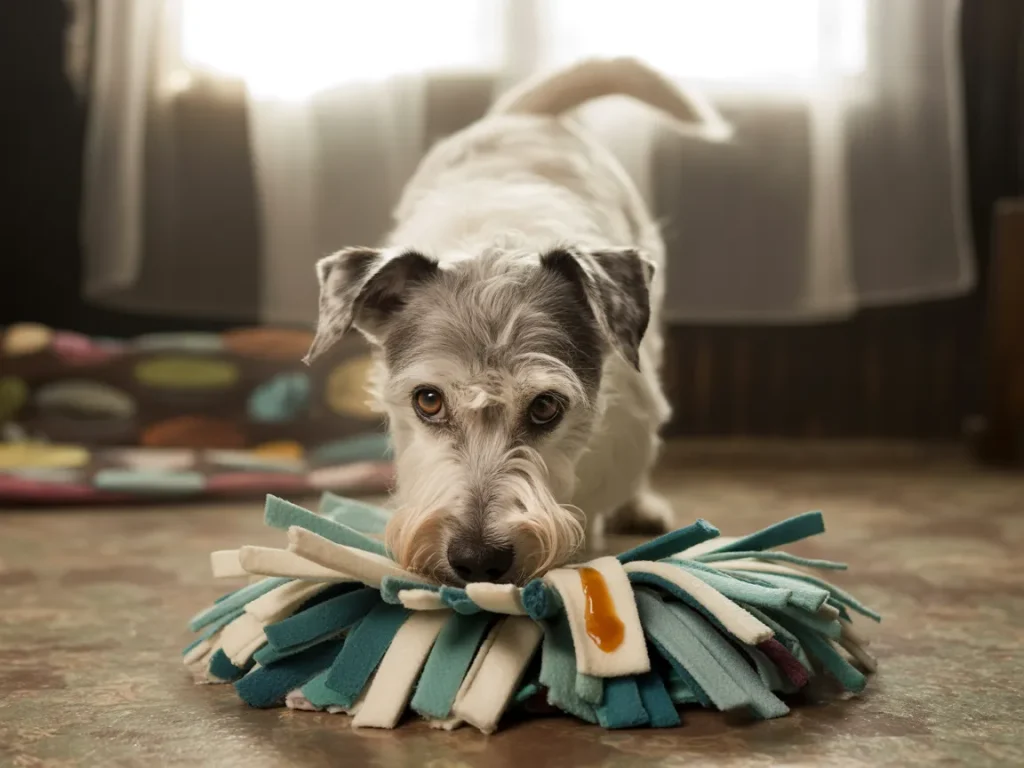
Variations that Keep It Fresh
Lightly brush a few strips with chicken broth or tuna water, let them dry, then mix those “scent flags” into the mat. Swap in a handful of new fabric pieces every couple of weeks—different textures add just enough novelty without rebuilding the whole thing.
Lightly brush a few strips with chicken broth or tuna water, let them dry, then mix those “scent flags” into the mat. Swap in a handful of new fabric pieces every couple of weeks—different textures add just enough novelty without rebuilding the whole thing.
Puppy & Senior Tweaks
For puppies, keep treats easier to find and sessions short. For seniors, use softer fabric and hide food shallow so it’s fun, not frustrating. Everyone deserves a win.
Quick Safety Check
Supervise the first sessions and remove any chewed-off fabric. Toss the mat in the wash now and then—mystery smells are great, mystery germs not so much.
5. Muffin Tin Brain Game
Meet the world’s cheapest puzzle toy. Drop a few treats into a muffin tin, cover each cup with a tennis ball (or small plush), and invite your dog to figure out which “lids” hide the goods. It’s like shell game night, but the house always lets your pup win.
Start by letting them watch you hide the treats. Then raise the stakes: fewer treat cups, heavier covers, or two tins side by side to build memory (“left tin paid last time—should I check it first?”).
Why It Works
Choice and scent = brain fireworks. Your dog sniffs, decides, tests, and remembers. That’s problem-solving wrapped in a snack.
Remix Ideas
Swap tennis balls for silicone cupcake liners, little bowls, or fabric squares. Drape a light cloth over the whole tray so they have to uncover the field first. Got a crafty streak? Cut scraps from an old crochet project and use them as soft covers—new textures, new puzzle.
Quick Safety Check
Skip this for dogs who try to swallow balls whole, and keep an eye out for cracked plastic or chewed covers. The game ends when the brain gets tired, not when the equipment does.
6. Frozen Treasure Blocks
Hot day? Serve a popsicle your dog can read with their tongue. Fill a plastic container with low-sodium broth, a handful of blueberries, and a sprinkle of kibble. Freeze, then pop the block into a shallow tray. As it melts, your dog licks, paws, and learns that patience pays—slow fun, big payoff.
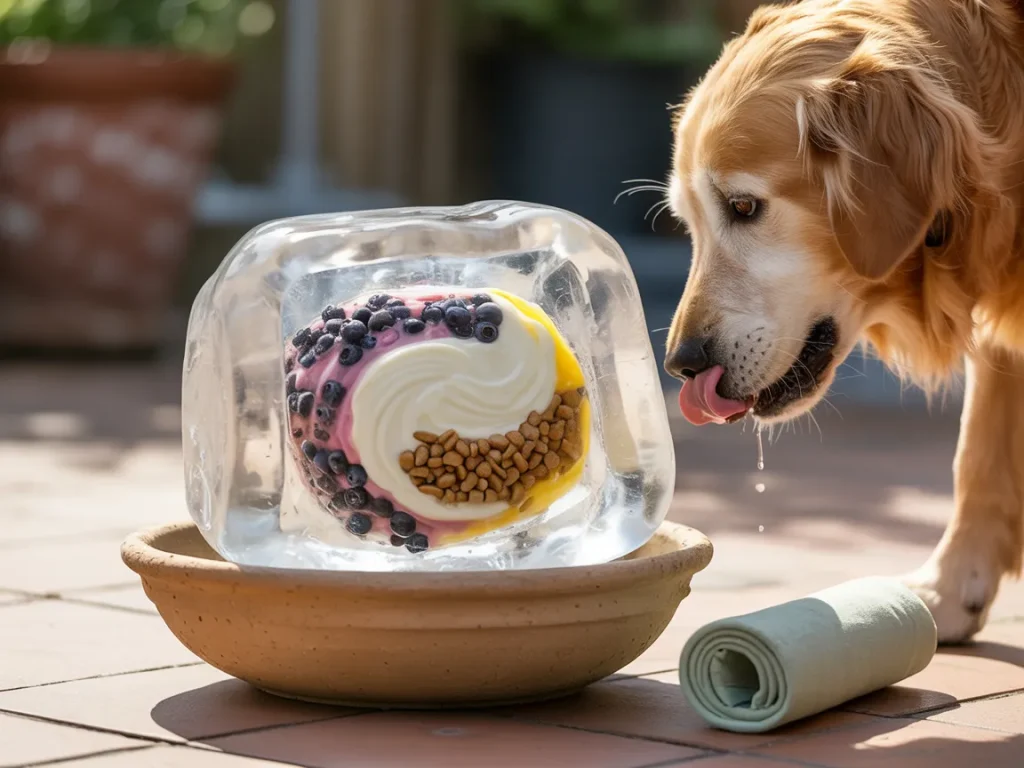
Flavor & Texture Upgrades
Swirl in a spoon of plain yogurt before freezing for marbled layers that change as the ice melts. Beginners do best with smaller cubes; seasoned pros can graduate to a single “mini iceberg.” Want a delayed jackpot? Hide a small, non-toxic chew in the center.
Outside Is Your Friend
This is an excellent porch or yard activity. It cools them down and buys you a quiet ten minutes—maybe fifteen if you pretend you didn’t hear the first “I’m done” snort.
Quick Safety Check
Offer on a towel or tray to avoid slippery floors. Don’t use onions, grapes, or anything unsafe for dogs (see the ASPCA’s list of people foods to avoid). If your pup’s teeth are sensitive, keep blocks small and let them soften a bit before serving.
7. Smart Treat-Tracking Jar
Think of this as your dog’s personal scoreboard—simple, transparent, and way more fun than counting steps. Grab a clear jar or tub and stick on a few easy icons like “sit,” “paw,” and “wait.” Drop in a handful of wrapped soft treats or little capsules. After your dog nails a cue, flip the matching icon or move a token, then let them “cash out” a reward from the jar. As they get the hang of it, teach a nose-touch to the right icon before the payout—hello, beginner communication game.
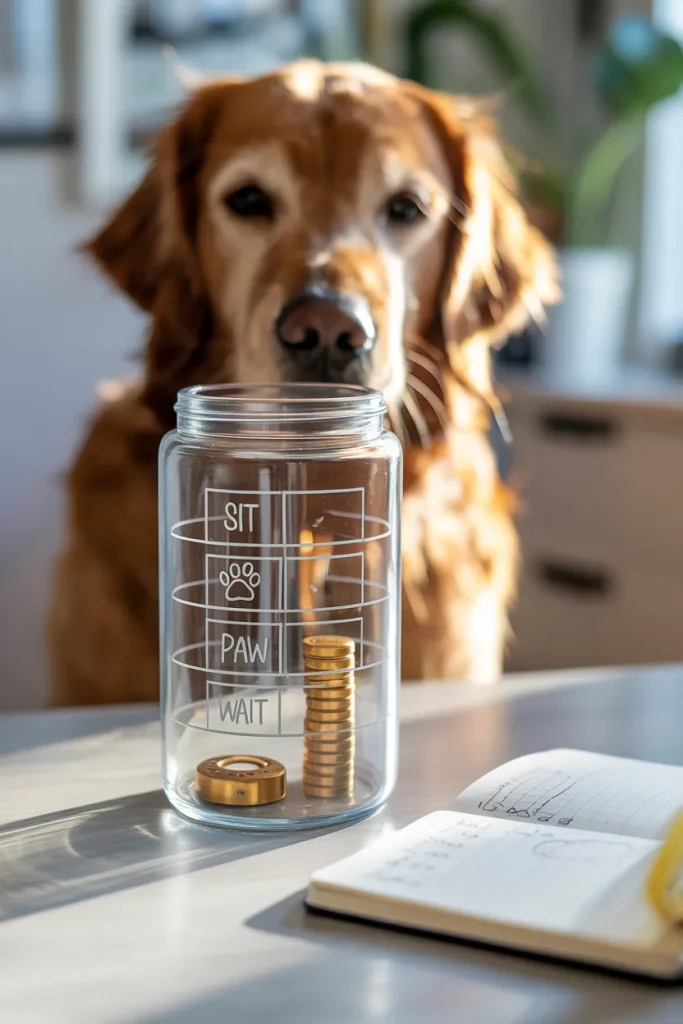
Make It a Game (Not Just a Jar)
Keep a small stash of extra tokens nearby—think a tiny dog-toy storage cup or caddy—so you can swap behaviors and keep the challenge fresh. One week it’s “spin,” next week it’s “down-stay,” and on rainy days you chain two moves (“spin, then sit”) to build sequencing without making it feel like homework. The structure gives your dog agency: they see the “score,” they earn the win.
Why It Works
Dogs love clear rules and quick cause-and-effect. The jar is a visual promise: “Do the thing, get the thing.” It turns training reps into a mini-game and helps you track progress without a spreadsheet. On your best days, it feels like your dog is learning to “order off the menu.”
Level-Ups
Add a “mystery” token that pays something different each time—kibble now, a short tug game later, big party praise tomorrow. You’ll see motivation rise because the reward is exciting, not predictable. For smarty-pants pups, rotate icons every few days so cues don’t go stale.
Quick Safety Check
Use soft, safe treats and avoid tiny plastic bits your dog could swallow. If your dog is a jar-crusher, switch to a sturdy, dog-safe container and supervise until you trust the routine.
Conclusion
Brain games don’t have to be fancy or pricey. A few household materials, a little intention, and a rotating dog toy basket or box can keep your pup’s mind humming—like giving them a crossword that smells like chicken. Mix scent work, problem-solving, and simple motor challenges, then tweak the difficulty so wins keep coming without getting boring.
Regular refreshes are the secret sauce. Swap textures, rotate toys, and change the rules just enough to spark curiosity. That’s how you end up with a calmer, happier dog—and a home that doesn’t look like a chew-toy crime scene.
Disclaimer: This article is for informational purposes only and does not constitute professional veterinary advice. Always consult a licensed veterinarian or certified dog trainer regarding the specific needs and health of your dog.
